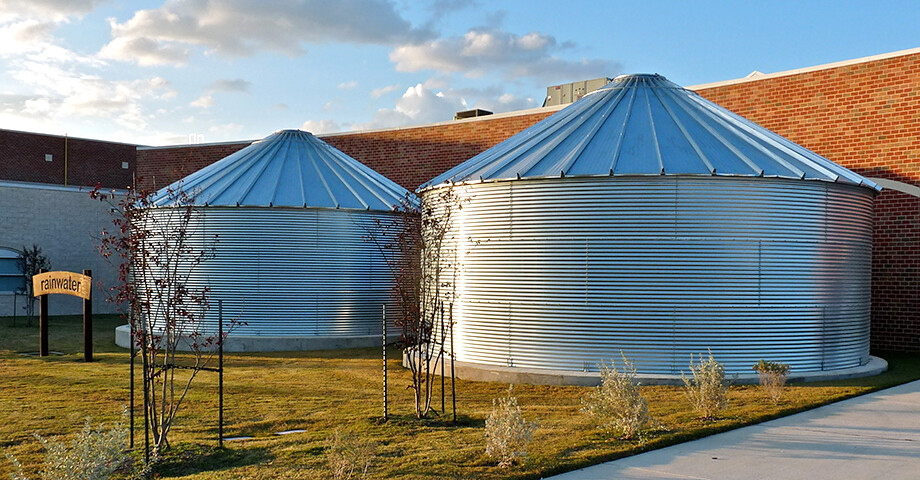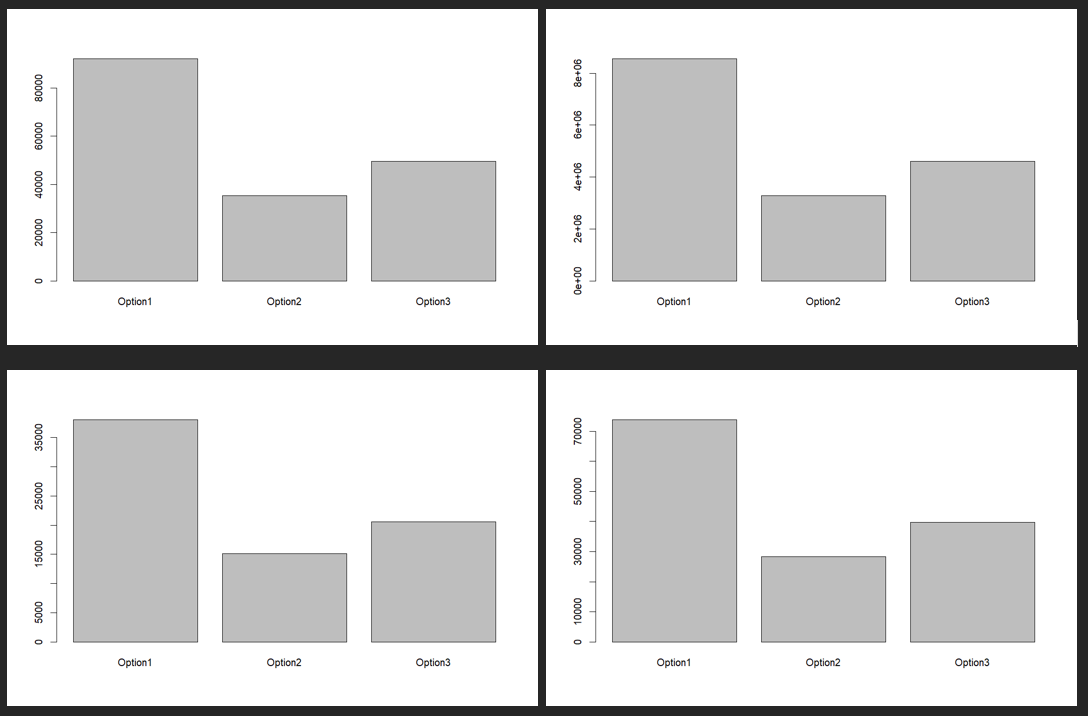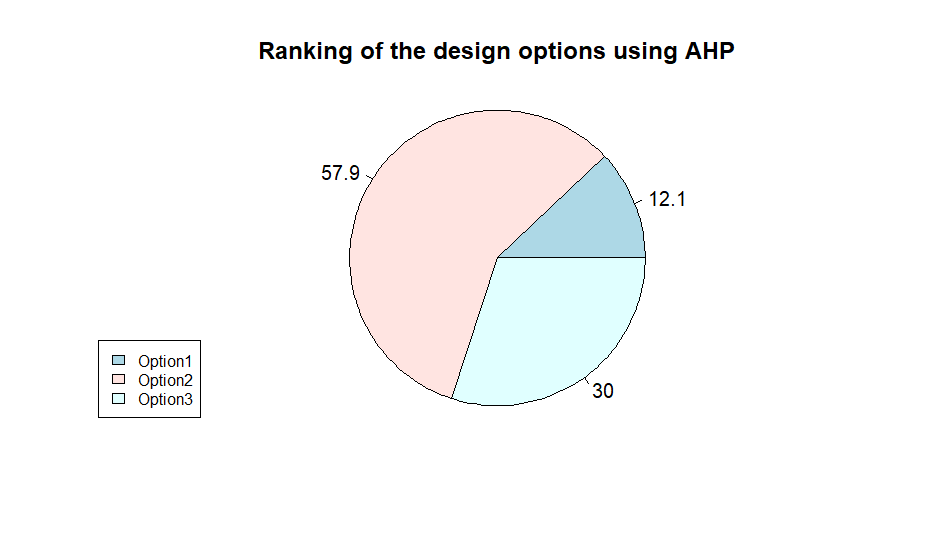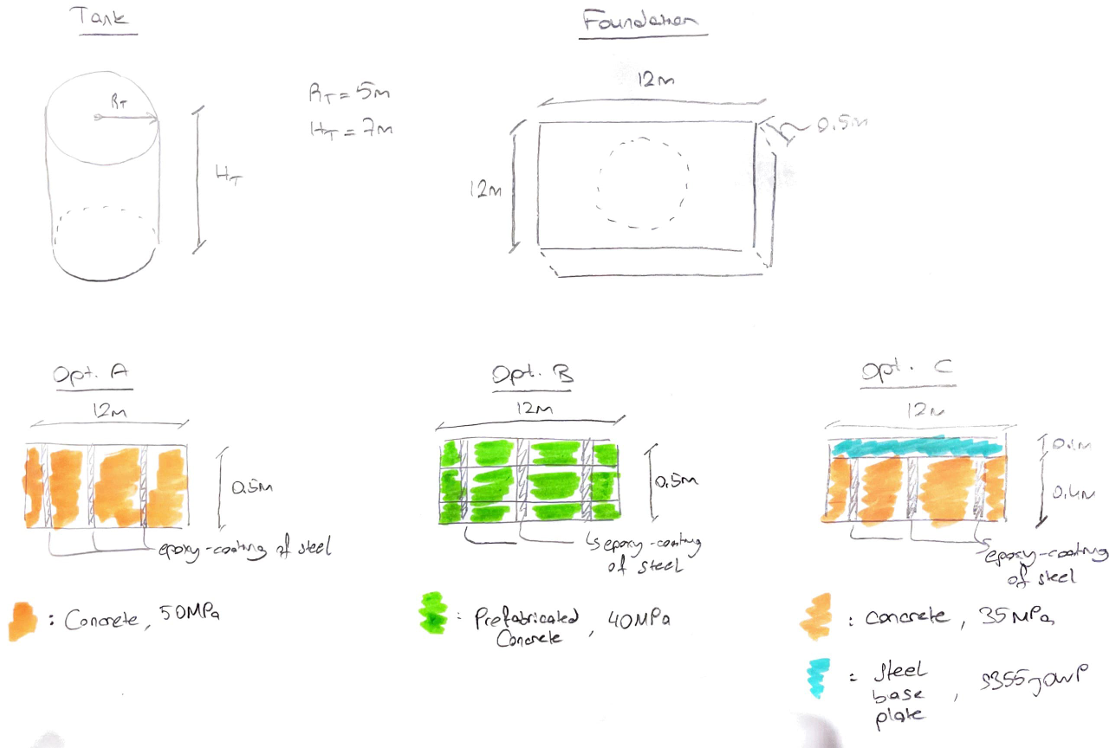
Fig. 1: Steel Liquid Storage Tank
Illustration Reference: Rain Brothers. (n.d.). Corrugated steel water storage tanks. Rain Brothers. Retrieved January 27, 2025, from https://www.rainbrothers.com/store/Corrugated-Steel-Water-Storage-Tanks-p281493373
In our rapidly advancing cities, the design and sustainability of critical infrastructure systems have become paramount. Among these, the foundation systems for water storage tanks are crucial, as they ensure the structural stability and longevity of reservoirs essential for municipal services and industry.
Subsystem: Tank Foundation
The foundation is a vital structural component that supports the tank and distributes its load to the underlying soil. A failure in the foundation directly compromises the tank’s functionality. Consequently, selecting the most suitable foundation design during the planning phase is imperative.
In this assignment, three foundation design options were compared: (1) Reinforced Concrete (RC A), (2) Prefabricated Modular RC (PRC B), and (3) Steel-RC Hybrid (RC C). All options serve the same function, as the tank size and water capacity remain constant across the designs.
Fig. 2: Sketches of the design options
Environmental performance indicators chosen for analysis included:
- Energy Consumption (MJ)
- CO2 Emissions (kg eq. CO2)
- NOx Emissions (kg eq. NOx)
- SO2 Emissions (kg eq. SO2)

Fig. 3: LCA Results: Energy Consumption (top left), CO2 Emissions (top right), NOx Emissions (bottom left), and SO2 Emissions (bottom right).
The LCA results suggest that Option B (Prefabricated Modular RC) (Option 2) minimizes environmental impact, making it a strong candidate for sustainable design.
To refine this analysis, the Analytic Hierarchy Process (AHP), a Multi-Criteria Decision Method, was used. AHP enables pairwise comparisons of each design option based on the selected indicators.

Fig. 4: Rankings of AHP
The results of the AHP confirm that Option 2 (Prefabricated Modular RC) remains the most environmentally and structurally favourable design, striking an optimal balance between sustainability and performance. As a result, this design option is recommended for implementation in this assignment.
References:
[1] Hartmann, T. (2024). Bridge Tutorial [Course materials]. Whole Life Civil Systems Analysis, Winter Semester 2024/25, Technische Universität Berlin.
[2] Marceau, M., Nisbet, M. A., & Van Geem, M. G. (2007). Life cycle inventory of Portland cement concrete. Portland Cement Association.
[3] Xinsteel Industrial Co., Ltd. (n.d.). S355J0WP steel plate. Retrieved December 15, 2024, from https://www.xsteelstock.com/en10025-5/s355j0wp-plate.html
[4] Collins, T. (n.d.). 5 different types of corrosion prevention methods. EonCoat. Retrieved December 15, 2024, from https://eoncoat.com/corrosion-prevention-methods/
Steel Liquid Storage Tank | Water Distribution Network | Dam | Primary Sedimentation Tank/Wastewater Treatment
